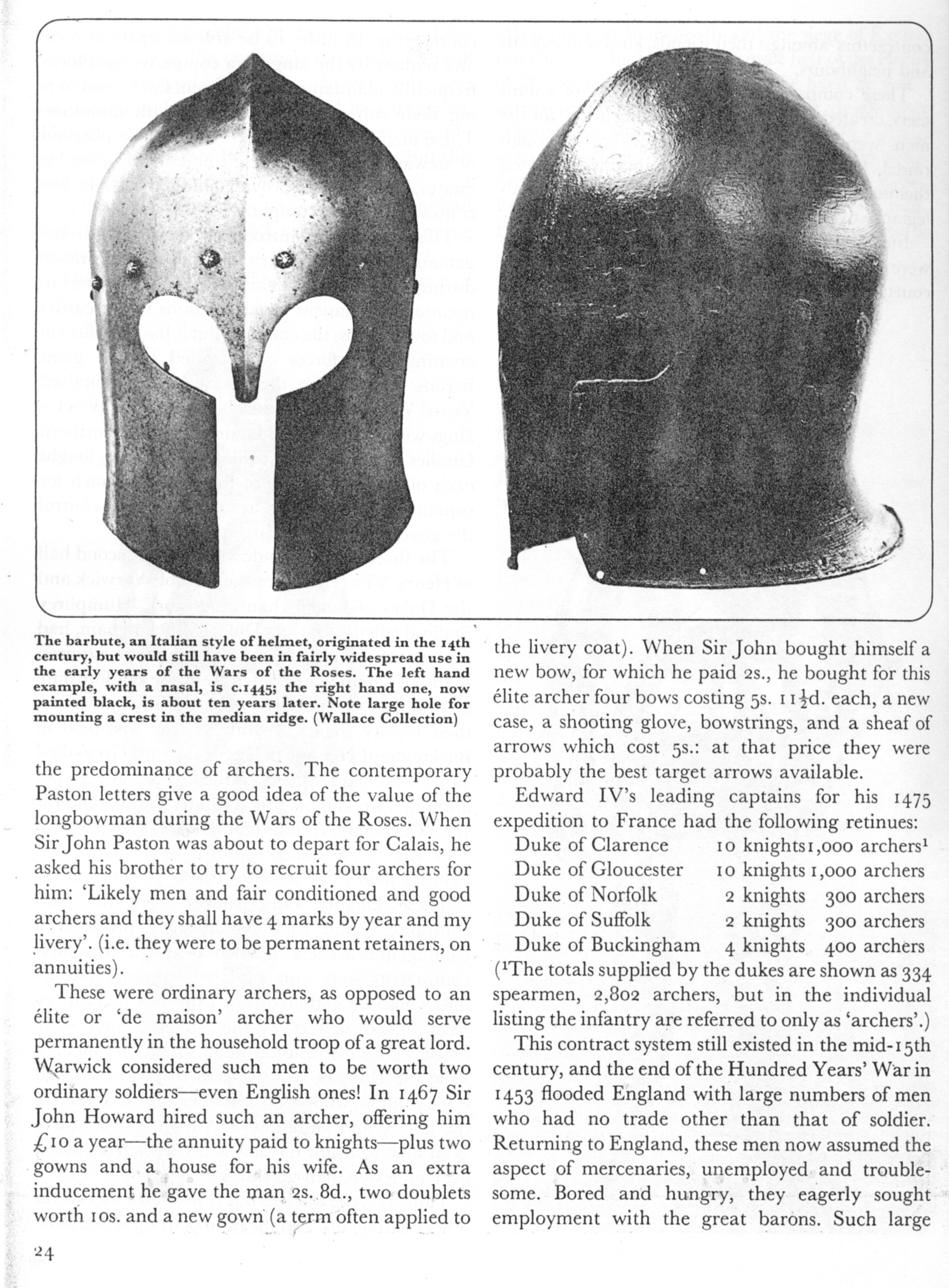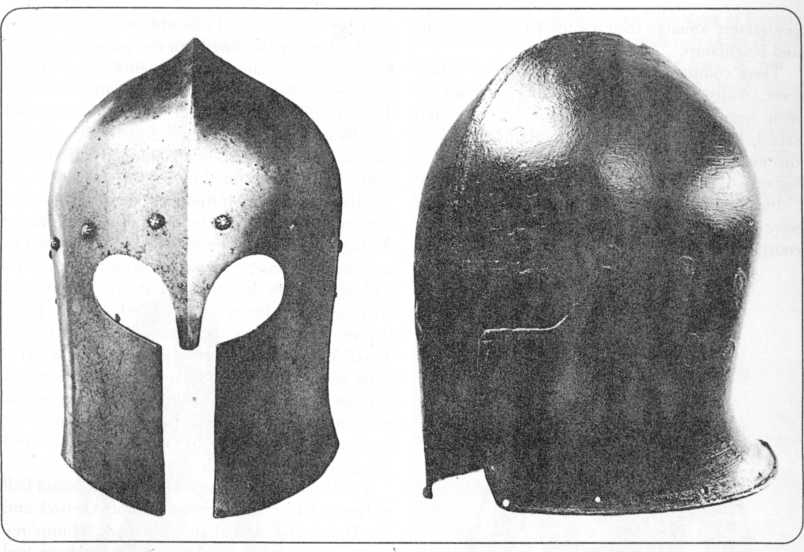m145$


The barbute, an Italian style of helmet, originated in the I4th century, but would still have been in fairly widespread use in the early years of the Wars of the Roses. The left hand example, with a nasal, is c.1445; the right hand one, now painted black, is about ten years later. Notę large hole for mounting a crest in the median ridge. (Wallace Collection)
Duke of Clarence Duke of Gloucester Duke of Norfolk Duke of Suffolk Duke of Buckingham
the predominance of archers. The contemporary Paston letters give a good idea of the value of the longbowman during the Wars of the Roses. When Sir John Paston was about to depart for Calais, he asked his brother to try to recruit four archers for him: ‘Likely men and fair conditioned and good archers and they shall have 4 marks by year and my livery\ (i.e. they were to be permanent retainers, on annuities).
These were ordinary archers, as opposed to an elite or ‘de maison’ archer who would serve permanently in the household troop of a great lord. W^irwick considered such men to be worth two ordinary soldiers—even English ones! In 1467 Sir John Howard hired such an archer, offering him £ioayear—the annuity paid toknights—plus two gowns and a house for his wife. As an extra inducement he gave the man 2S. 8d., two doublets worth ios. and a new gown (a tęrm often applied to the livery coat). When Sir John bought himself a new bow, for which he paid 2s., he bought for this elite archer four bows costing 5S. 1 i^d. each, a new case, a shooting glove, bowstrings, and a sheaf of arrows which cost 5S.: at that price they were probably the best target arrows available.
Edward IV’s leading captains for his 1475 expedition to France had the following retinues: 10 knights 1,000 archers1 10 knights 1,000 archers 2 knights 300 archers 2 knights 300 archers 4 knights 400 archers (xThe totals supplied by the dukes are shown as 334 spearmen, 2,802 archers, but in the individual listing the infantry are referred to only as ‘archers’.)
This contract system still existed in the mid-i5th century, and the end of the Hundred Years’ War in 1453 flooded England with large numbers of men who had no trade other than that of soldier. Returning to England, these men now assumed the aspect of mercenaries, unemployed and trouble-some. Bored and hungry, they eagerly sought employment with the great barons. Such large
Wyszukiwarka
Podobne podstrony:
m144# V (Left and ccntrc) An Italian armour of c.1450, from a Milanesc workshop. It has bccn rcputcd
m1363 left Bombard cannon, probably Italian from the first half of the I4th century. The carriage is
80 approved by the animal care committee of the Universite du Qućbec a Rimouski and have been conduc
vehicle has been the Committee on Large Dams. Geotechnicans have been the ones to initiate new
42 (114) 266 Chapter 7 have been received from the bank and all flight tickets have been received&nb
210 South Africa The dynamie cone penetrometer has, how-ever, been used fairly extensively to es-tlm
34528 w01$ An Italian ivory chessman, probably of the nth century. Hemay be wearing a shor
00100 ?e6667c29dfdea3c59f1657bb3f2b02 99 The OCAP manufacturing process remains in an unknown State
00280 ?50e49716bf91ec4f5cc241ba142d24 282 Montgomery & Runger Statistica! Inference in tbe Rand
więcej podobnych podstron